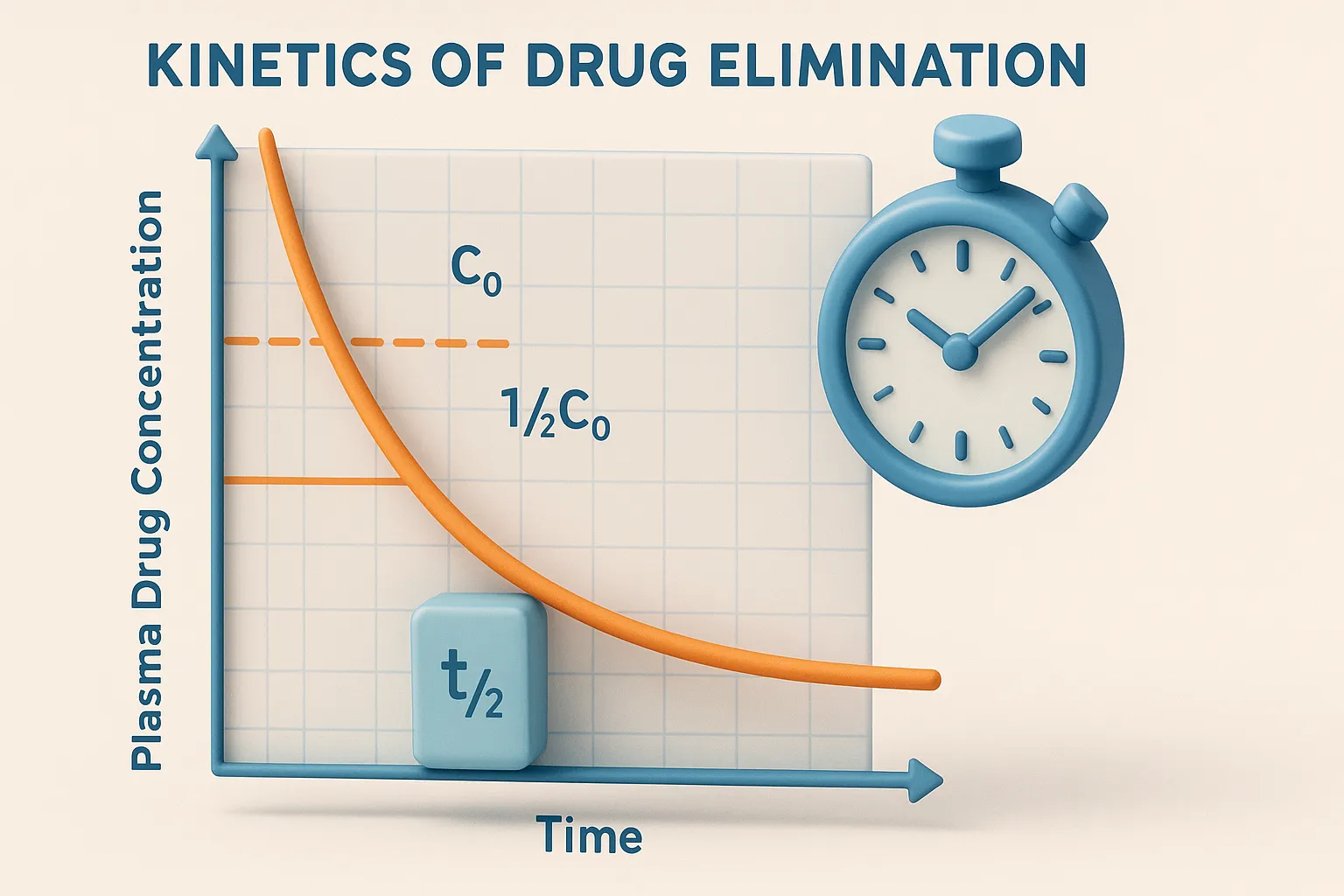- Kinetics of drug elimination explains how drugs are removed from the body, following zero or first-order processes.
- Drug elimination kinetics describe how the concentration of a drug decreases over time.
Clearance and Half-Life
- Clearance (CL): The volume of plasma completely cleared of drug per unit time (mL/min or L/hr).
- Total body clearance is the sum of individual clearances via each route (e.g., hepatic + renal + others).
- Half-life (t½): Depends on volume of distribution (Vd) and clearance (CL):
$t_{\frac{1}{2}} = \frac{0.693 \times V_d}{CL}$
- Knowing half-life helps determine dosing intervals and time to reach steady-state (usually 4–5 half-lives under first-order kinetics).
Types of Drug Elimination Kinetics
-
First-Order Kinetics (Exponential Elimination):
- Most drugs follow this.
- A constant fraction of drug is eliminated per unit time.
- Rate of elimination is proportional to drug concentration.
- Drug concentration decreases exponentially.
- Half-life (t½):
- Time taken for the plasma concentration to decrease by 50
- Independent of dose in first-order kinetics.
Advertisements
-
Zero-Order Kinetics (Linear Elimination):
Click Here to Watch the Best Pharma Videos

